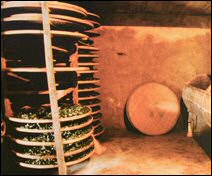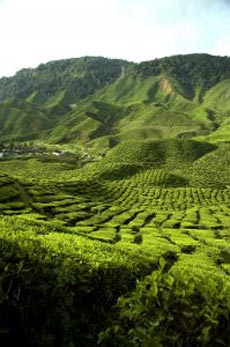A Tea Monopoly: The British East India CompanyBy the early 1700s, the British East India Company had established itself as the dominant trading power and would go on to monopolize the tea trade with China. Trading stations sprang up in India, including hubs in Bombay, Bengal and Madras. The Company, acting as an imperial arm of England, would exercise significant political power in helping to create a wealthy and powerful British Empire. This included not only trading but also the right to annex land, direct troops and dictate British laws.
|
 |
Around 1823, British Army Major Robert Bruce stumbled upon indigenous tea bushes growing in the Northeast region of Assam, India. With this discovery, the British East India Company seized the opportunity to experiment with growing tea in not only Assam but in Darjeeling, a region in Northeastern India at the foot of the Himalayas. An East India Company employee, Dr. Campbell, first planted Darjeeling tea seeds in his garden at Beechwood, Darjeeling. |
| Drying tea leaves. Photo courtesy MightyLeaf.com. |
The planting proved so successful that in 1847 the British government began developing tea estates in the area.
This marked the beginning of a new tea industry in India and an end to reliance on Chinese-grown tea. With tea plantations springing up all over parts of India and the advent of the industrial revolution, the tea trade in India would flourish.
Continue To Page 6: Tea In North America
Return To Article Index At The Top Of The Page
![]()
© Copyright 2005-2025 Lifestyle Direct, Inc. All rights reserved. All images are copyrighted to their respective owners.




 Fine tea is cultivated on beautifully terraced plantations. Sri Lanka is the largest exporter of tea, followed by Kenya, China and India. India and China are by far the largest producers, but keep most of their tea for domestic consumption. Here, the tea plantation at Cameron Highland, Malaysia. Photo by Elaine Tan | SXC.
Fine tea is cultivated on beautifully terraced plantations. Sri Lanka is the largest exporter of tea, followed by Kenya, China and India. India and China are by far the largest producers, but keep most of their tea for domestic consumption. Here, the tea plantation at Cameron Highland, Malaysia. Photo by Elaine Tan | SXC.